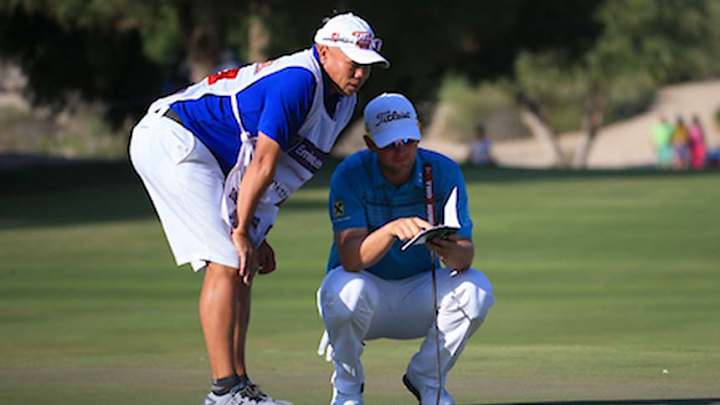Green-Reading Books Could Soon Be Banned From PGA Tour

Of all the aids that PGA Tour players use to make their jobs easier – from TrackMan to alignment rods to mirrors on the practice green – green-reading books have become, all of a sudden, the most controversial.
So much so, that the Tour’s 16-member Players Advisory Council (PAC) has recommended banning the books from competition. The full board of directors of the PGA Tour is expected to act soon.
Green-reading books have been on Tour since 2008, showing directions that putts break and the percentage of slope in different parts of greens. But the USGA decided in 2018 that the books should be more difficult to read and limited the size of the books to 4½ x 7 inches, to the scale that 3/8-inch on the book would correspond to five yards on the green.
Still, the Tour’s PAC met at the Memorial Tournament and voted “overwhelmingly,” according to one of the members, to ban the books.
“It's not that it's an advantage really, it's just taking away a skill that takes time and practice to be mastered,” said Rory McIlroy, president of the PAC, at the U.S. Open. “I think reading greens is a real skill that some people are better at than others, and it just nullifies that advantage that people have.
“Honestly, I think it's made everyone lazier. People don't put in the time to prepare the way they used to, and that's why you see so many more players at Augusta, for example, take their time around the greens, hit so many more putts, it's because they have to.”
Augusta National Golf Club, host of the Masters, is the only stop on the PGA Tour that currently doesn’t allow players to use greens books.
Jim Stracka, along with his son, Chase, are the founders of StrackaLine, one of the major producers of green-reading books and one of the two greens books on the PGA Tour. The other is Tour Sherpa.
Stracka is obviously unhappy with the PAC’s decision. “People don’t read greens—they hit putts based on memory,” Stracka told Golf Digest. “We all know how much easier it is to hit a putt when your competitor just hit one on the same line. Green-reading is more memory. They move so much earth around today that you can’t rely on the visuals.
“Your mind will play tricks on you. If you’re good enough and use Aimpoint [the green-reading technique] to read them with your feet, great. But when they say it’s a necessary skill, I say that’s baloney. Green-reading is more memory. We all know how well we read greens when we play a course on a regular basis. You remember a point, and that’s what you rely on.”
Stracka says the common belief that green-reading books contribute to slow play is just not true. He studied college golfers, notoriously the slowest players, and found their rounds were 15 minutes faster with the books than without.
“If you wait to use it ‘til the last minute—slow players are slow, fast players are fast, Stracka said. “They use that as an excuse a lot of times, but it’s not accurate.”
Stracka charges $170 per tournament for the PGA Tour books. He also sells books to more than 400 college golf programs and AJGA events.
McIlroy admitted to using the books himself but says he won’t miss them if they’re gone.
“Look, it might make practice rounds a little longer, and you might have to do a little bit more work, but I think, once we get to the tournament rounds, it will speed up play, and I think it will help the guys who really have done their homework, it will help them stand out a little bit more,” he said.
